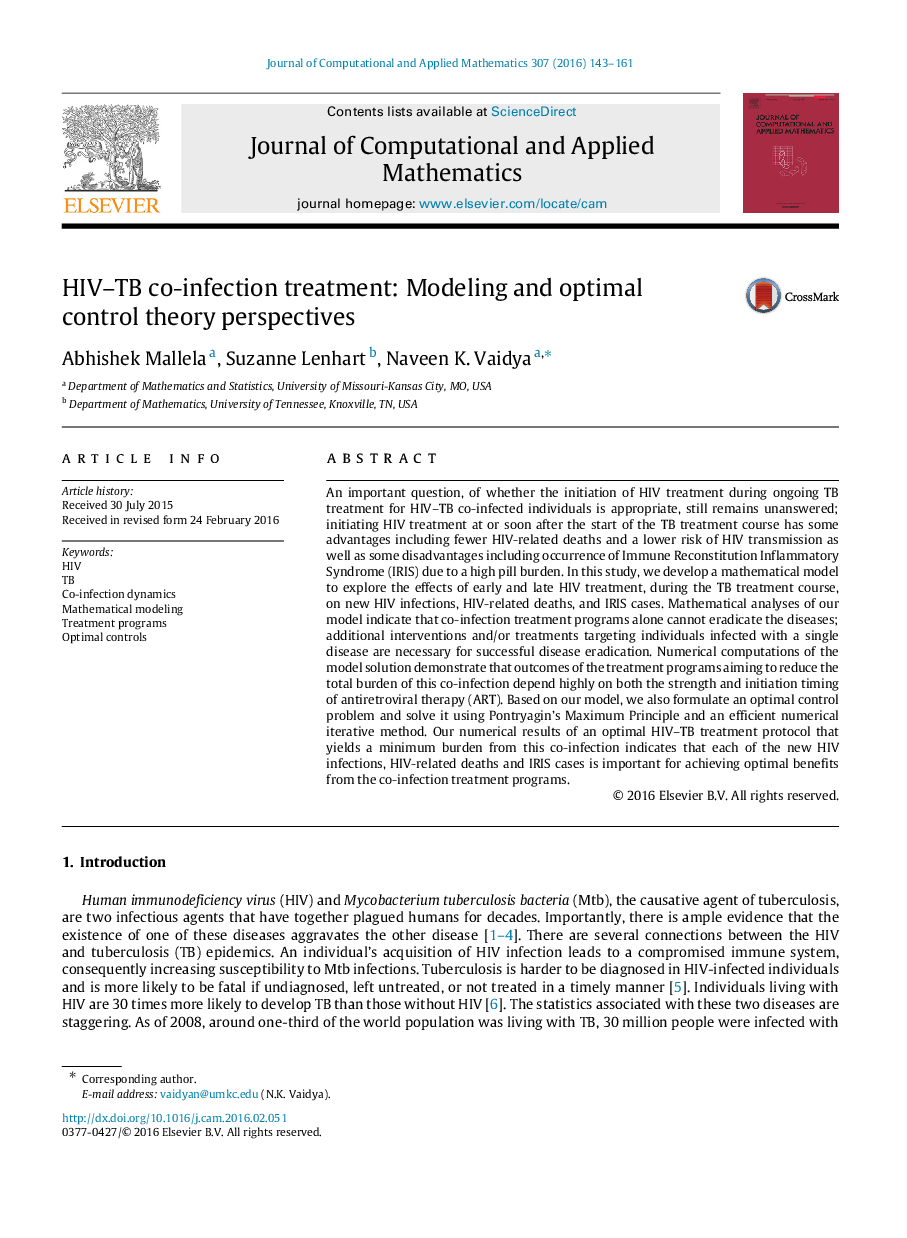| Article ID | Journal | Published Year | Pages | File Type |
|---|---|---|---|---|
| 4637859 | Journal of Computational and Applied Mathematics | 2016 | 19 Pages |
An important question, of whether the initiation of HIV treatment during ongoing TB treatment for HIV–TB co-infected individuals is appropriate, still remains unanswered; initiating HIV treatment at or soon after the start of the TB treatment course has some advantages including fewer HIV-related deaths and a lower risk of HIV transmission as well as some disadvantages including occurrence of Immune Reconstitution Inflammatory Syndrome (IRIS) due to a high pill burden. In this study, we develop a mathematical model to explore the effects of early and late HIV treatment, during the TB treatment course, on new HIV infections, HIV-related deaths, and IRIS cases. Mathematical analyses of our model indicate that co-infection treatment programs alone cannot eradicate the diseases; additional interventions and/or treatments targeting individuals infected with a single disease are necessary for successful disease eradication. Numerical computations of the model solution demonstrate that outcomes of the treatment programs aiming to reduce the total burden of this co-infection depend highly on both the strength and initiation timing of antiretroviral therapy (ART). Based on our model, we also formulate an optimal control problem and solve it using Pontryagin’s Maximum Principle and an efficient numerical iterative method. Our numerical results of an optimal HIV–TB treatment protocol that yields a minimum burden from this co-infection indicates that each of the new HIV infections, HIV-related deaths and IRIS cases is important for achieving optimal benefits from the co-infection treatment programs.
